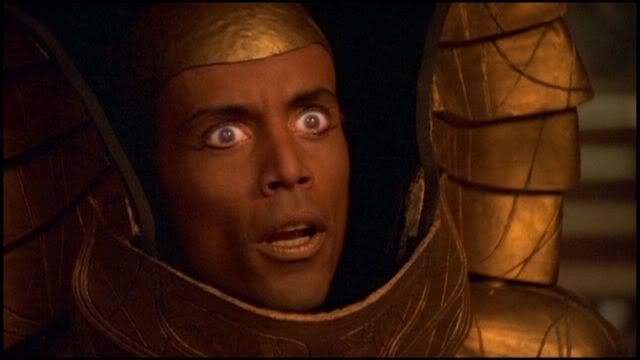Ancient Egyptian mummies preserve many details of the deceased: facial features, signs of illness, even tattoos. But not, it seemed, DNA. After trying repeatedly to extract it, may scientists were convinced that the hot desert climate and, perhaps, the chemicals used in mummification destroyed any genetic material long ago. Now, a team of ancient DNA specialists has successfully sequenced genomes from 90 ancient Egyptian mummies. The game-changing results give scientists their first insight into the genetics of ordinary ancient Egyptianswhich changed surprisingly little through centuries of conquests.
The sequencing success, reported this week in Nature Communications, finally proves to everyone that theres DNA preserved in ancient Egyptian mummies, says Albert Zink, a biological anthropologist at the Institute for Mummy Studies in Bolzano, Italy. He participated in a 2010 study that identified DNA sequences from 16 ancient Egyptian royal mummies, including Tutankhamun. But that study used polymerase chain reaction, a method that efficiently finds and extracts targeted DNA fragments but cannot always reliably distinguish between ancient DNA and modern contamination.
The new study, led by Johannes Krause, a geneticist at the Max Planck Institute for the Science of Human History in Jena, Germany, used next-generation sequencing methods to read stretches of any DNA present in a sample and fish out those that resembled human DNA. The complete reads allowed the team to spot tell-tale damage patterns associated only with ancient DNA. That makes the new analysis much more reliable, says Hannes Schroeder, an ancient DNA researcher at the University of Copenhagen. It succeeds where previous studies on Egyptian mummies have failed or fallen short.
Krause, who has studied the DNA of Neandertals, Denisovans, and prehistoric migrants to Europe, recently gravitated toward ancient Egyptian mummies because of the empires tumultuous political history. At various points, it was conquered by Assyrians from the Near East, Nubians from farther south along the Nile, Persians, Greeks, and Romans, among others. Our question was, did those foreign conquests have a genetic impact? Krause says.
Krause turned to a collection of 151 mummy heads from the ancient settlement of Abusir el-Meleq, about 100 kilometers south of Cairo along the Nile. The settlement was devoted to Osiris, the god of the dead, making it a popular burial spot for many centuries. The heads were excavated (and removed from their bodies) in the early 20th century and now reside in two collections in Germany, at the University of Tübingen and Berlins Museum of Prehistory and Early History. Radiocarbon dating shows that the mummies span 1300 years of ancient Egyptian history, during many of the foreign conquests and then Egypts incorporation into first the Greek and then the Roman empires.
Whereas the mummies soft tissue contained almost no DNA, the bones and teeth were chock full of genetic material. Ninety of the mummies yielded DNA once housed in mitochondria, the power plants of cells. Mitochondria carry only a few genes, but they are so plentiful that its often easier to find their DNA than the single full human genome in a cells nucleus. Still, because mitochondrial DNA is passed down from mother to child, it leaves out the story of the fathers DNA. The nuclear genome, which contains DNA from both parents, is far more informative. Unfortunately, Krause says, only a few of the mummies nuclear genomes were well preserved, and even fewer passed his strict contamination tests. His team ended up with nuclear genome samples from only three mummies, each from a different time period.
Krauses team compared the mummies mitochondrial and nuclear DNA to ancient and modern populations in the Near East and Africa. They discovered that ancient Egyptians closely resembled ancient and modern Near Eastern populations, especially those in the Levant. Whats more, the genetics of the mummies remained remarkably consistent even as different powers conquered the empire. Its possible that the mitochondrial genomes simply dont record the genetic contributions of foreign fathers, says Yehia Gad, a molecular geneticist at the National Research Centre in Cairo and a founder of the Egyptian Museums ancient DNA lab who worked with Zink on past mummy studies. But the three mummies with nuclear genome data also show striking genetic continuity, Krause points out.
Later, however, something did alter the genomes of Egyptians. Although the mummies contain almost no DNA from sub-Saharan Africa, some 15% to 20% of modern Egyptians mitochondrial DNA reflects sub-Saharan ancestry. Its really unexpected that we see this very late shift, Krause says. He suspects increased trade along the Nileincluding the slave tradeor the spread of Islam in the Middle Ages may have intensified contact between Northern and sub-Saharan Africa.
Geneticist Iosif Lazaridis of Harvard Medical School in Boston, who studies how and when ancient populations mixed, calls the new results a big accomplishment. But he wonders how representative Abusir el-Meleq is of ancient Egypt as a whole. Egypt is a big place, he says. Other regions may have experienced its conquests in different ways, some perhaps with more genetic mixing. But Lazaridis hopes for more revelations to come. Now that its been proven that its possible to sample from mummieswell, there are literally thousands of mummies.
http://www.sciencemag.org/news/2017/05/scientists-thought-ancient-egyptian-mummies-didn-t-have-any-dna-left-they-were-wrong





